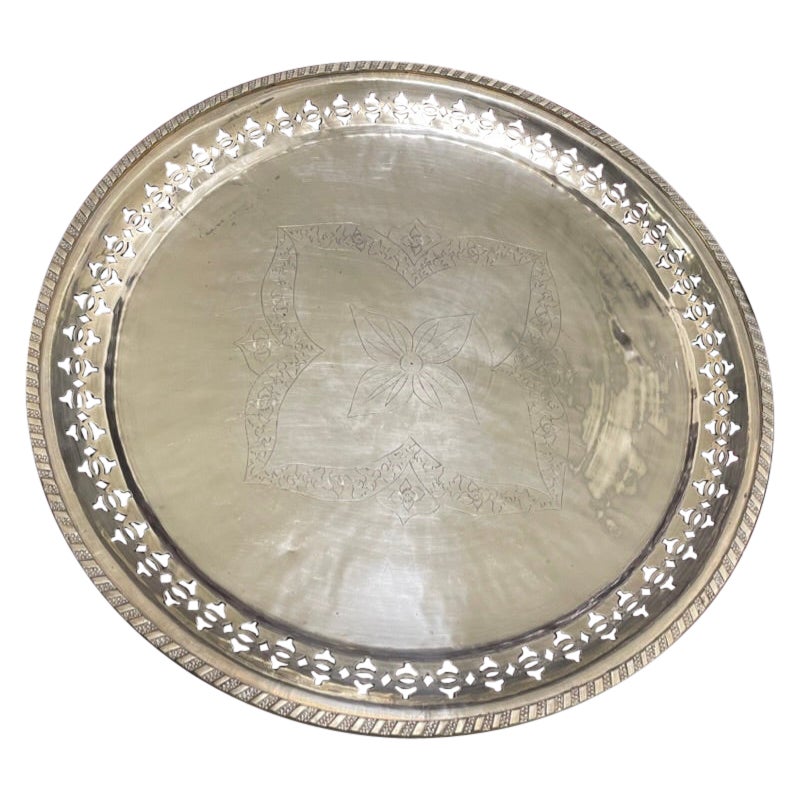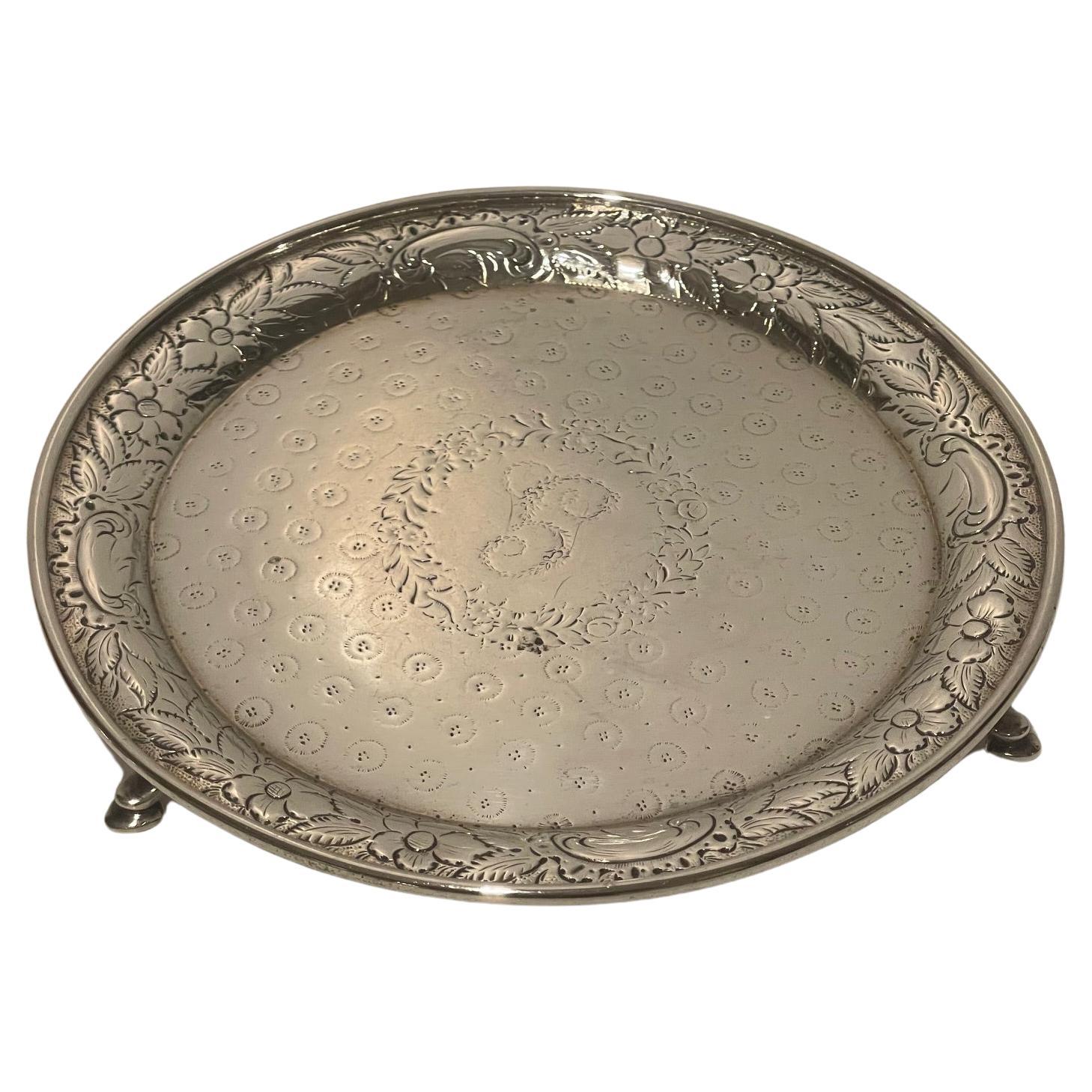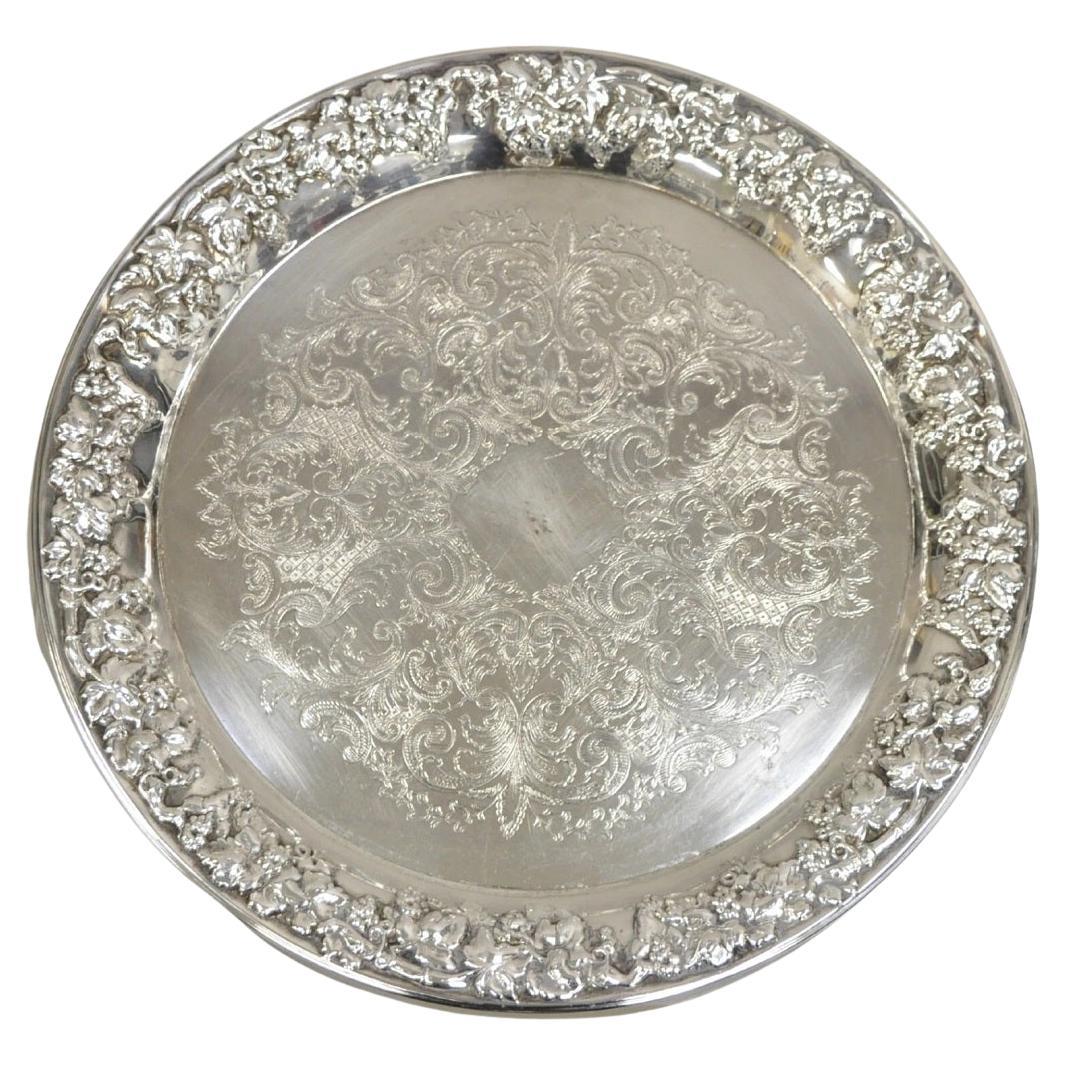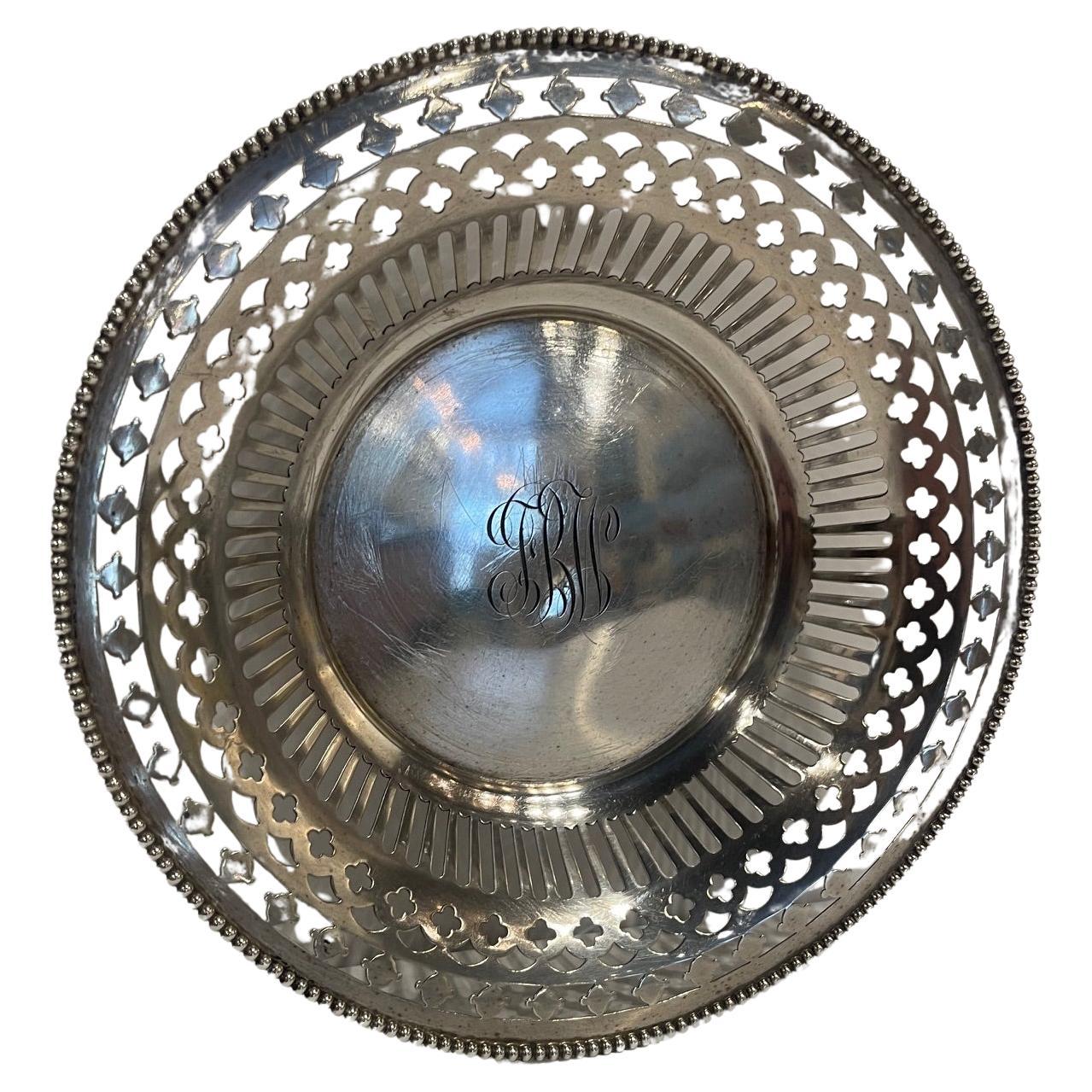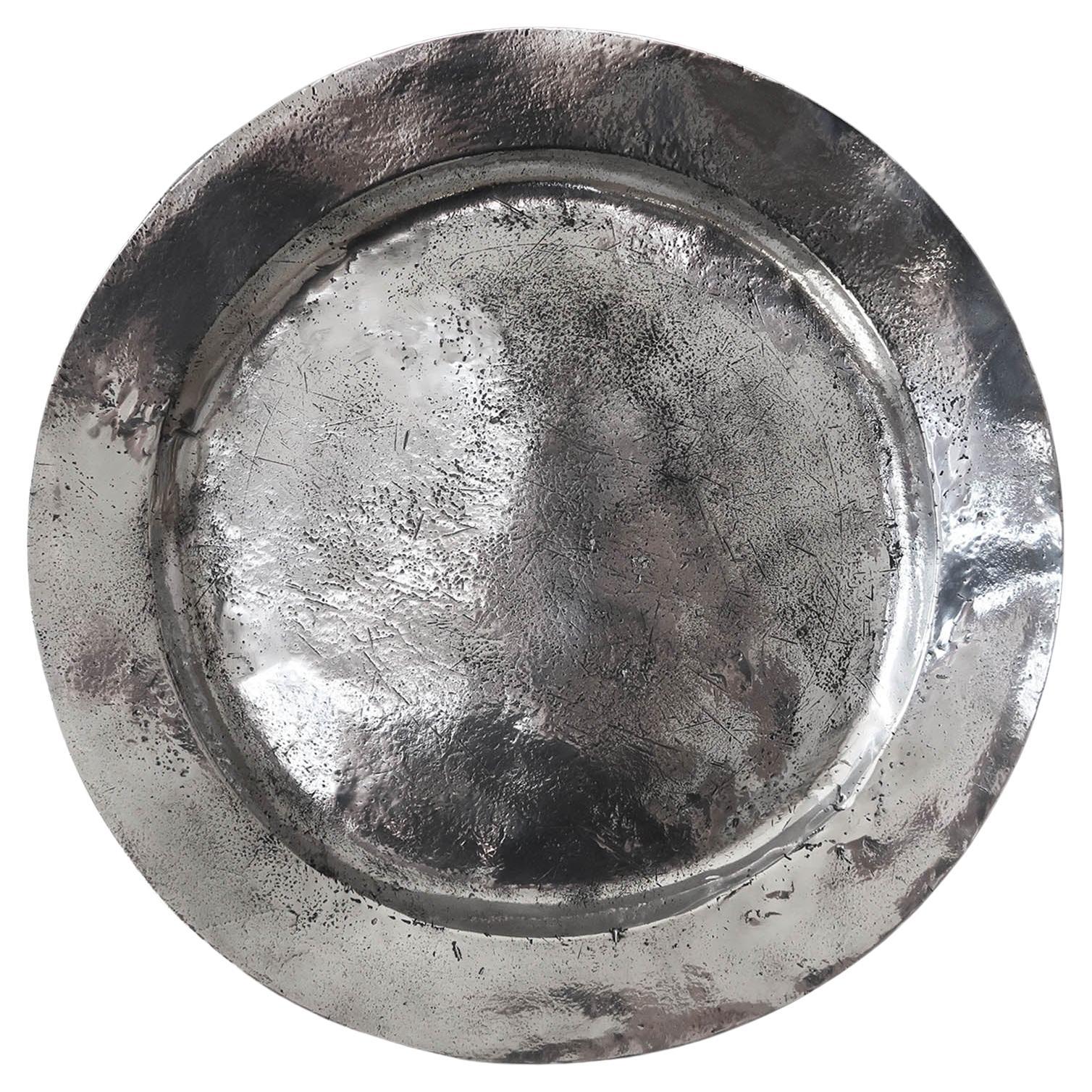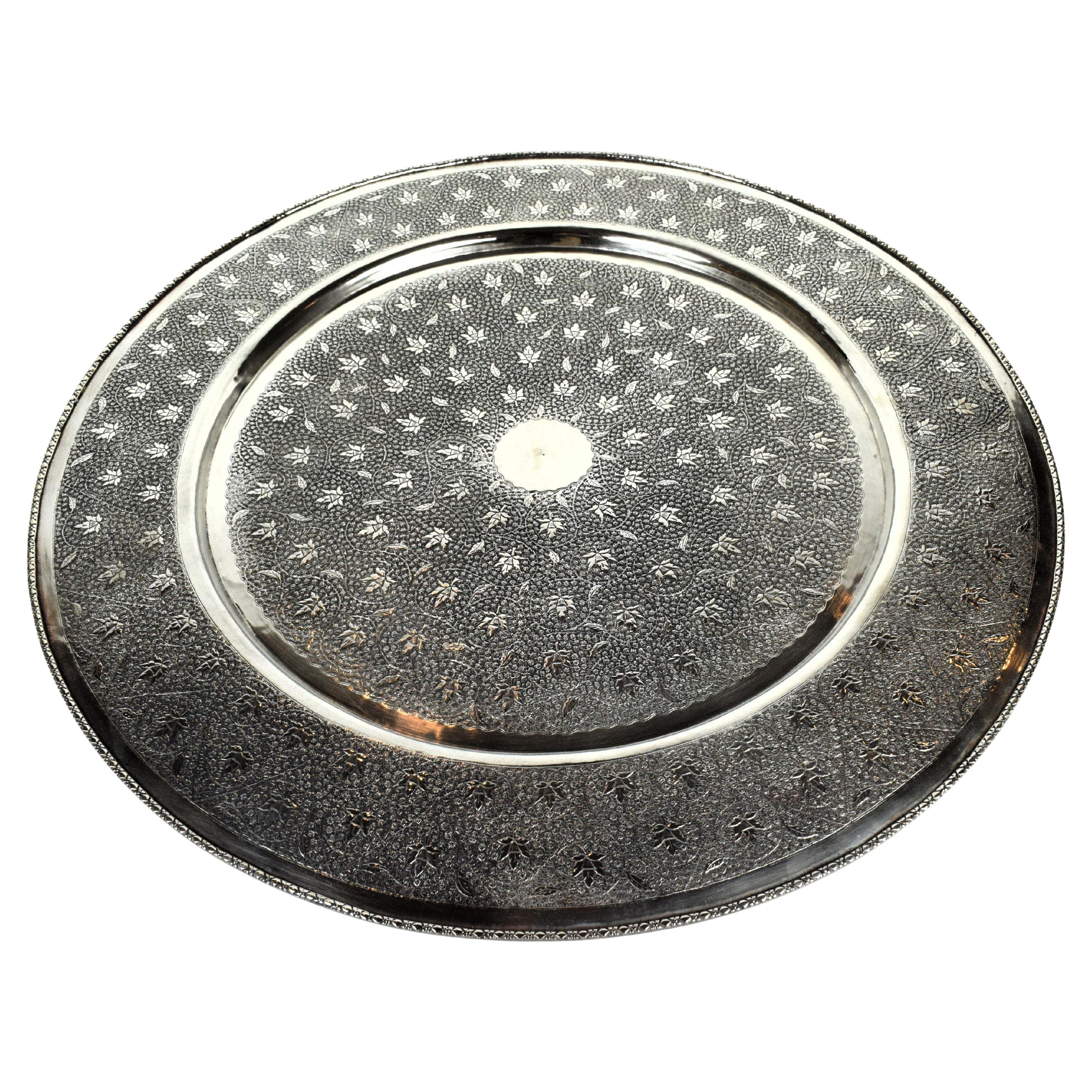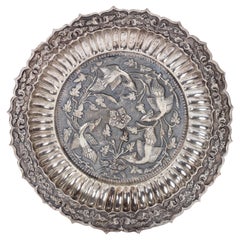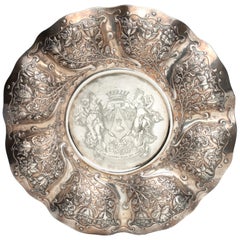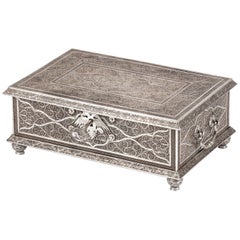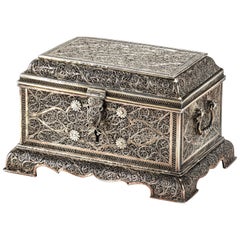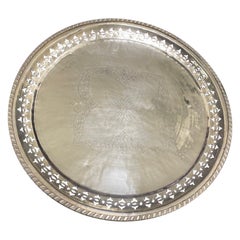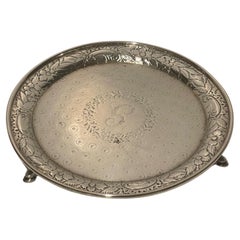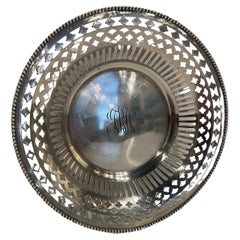Items Similar to Splendid and Heavy Late 17th Century Dutch-Colonial Silver Filigree Salver
Want more images or videos?
Request additional images or videos from the seller
1 of 12
Splendid and Heavy Late 17th Century Dutch-Colonial Silver Filigree Salver
$21,856.87
£16,383.08
€18,500
CA$30,027.63
A$33,523.02
CHF 17,565.56
MX$410,354.70
NOK 223,082.78
SEK 210,338.74
DKK 140,828.75
About the Item
A splendid and heavy Dutch-colonial silver filigree salver
Indonesia, Batavia (Jakarta) or possibly Padang, West Sumatra, 2nd half 17th century
Diam. 22.9 cm
Weight 551 grams
This filigree-work was probably done by Chinese masters working in Southeast Asia. Because in style, it is very similar to the famous filigree writing box with the arms of Stadholder William III (dated before 1689), which was collected by Tsar Peter the Great, now in the Hermitage Museum St. Petersburg. Indonesia is the most likely place for this salver to have been made. In the second half of the seventeenth-century silver filigree came into fashion at the European courts. Much of it was imported by the VOC in Amsterdam where Amalia van Solms, her grandson William III and representatives of many royal and noble houses such as Louis XIV, Peter the Great, the German Electors and the Danish Kings greedily collected filigree from the East.
- Dimensions:Height: 0.79 in (2 cm)Diameter: 9.02 in (22.9 cm)
- Style:Dutch Colonial (Of the Period)
- Materials and Techniques:
- Place of Origin:
- Period:
- Date of Manufacture:2nd half 17th century
- Condition:Wear consistent with age and use.
- Seller Location:Amsterdam, NL
- Reference Number:1stDibs: LU5458233868252
About the Seller
5.0
Recognized Seller
These prestigious sellers are industry leaders and represent the highest echelon for item quality and design.
Established in 1985
1stDibs seller since 2020
23 sales on 1stDibs
Typical response time: 2 hours
- ShippingRetrieving quote...Shipping from: Amsterdam, Netherlands
- Return Policy
Authenticity Guarantee
In the unlikely event there’s an issue with an item’s authenticity, contact us within 1 year for a full refund. DetailsMoney-Back Guarantee
If your item is not as described, is damaged in transit, or does not arrive, contact us within 7 days for a full refund. Details24-Hour Cancellation
You have a 24-hour grace period in which to reconsider your purchase, with no questions asked.Vetted Professional Sellers
Our world-class sellers must adhere to strict standards for service and quality, maintaining the integrity of our listings.Price-Match Guarantee
If you find that a seller listed the same item for a lower price elsewhere, we’ll match it.Trusted Global Delivery
Our best-in-class carrier network provides specialized shipping options worldwide, including custom delivery.More From This Seller
View AllFabulous Indonesian Yogya-Silver Plate
Located in Amsterdam, NL
An Indonesian Yogya-silver plate
Yogyakarta or Kotagede, 1935-1940, marked, (alloy) 800 and maker’s mark PH (Prawirohardjo, act. from 1935)
Diam. 27.2 cm Weight 454 grams
Th...
Category
Early 20th Century Indonesian Art Deco Sterling Silver
Materials
Silver
Dutch Colonial Silver Dish with the Von Pfeffel Coat-of-arms, 17th Century
Located in Amsterdam, NL
An unusual Indonesian lobbed silver dish
Jakarta (Batavia) or Coromandel coast, third quarter 17th century, apparently unmarked
The eight lobbed dish exuberantly decorated with floral motifs, with the middle section replaced, consisting of indistinctly marked German silver from the early 19th century, bearing the coat-of-arms of the Von Pfeffel family.
Diam. 30.5 cm
Weight 461 grams
Note:
Lobbed silver dishes with exuberant floral decorations were characteristic of the decorative arts in the Netherlands in the first half of the 17th century. This style of floral decoration was adopted by silversmiths as well as by furniture makers working on the Coromandel Coast and in Batavia, often by workers who had fled the Coromandel Coast because of war and famine. In Batavia this style was known as “Custwerck” (work from the Bengal coast).
These lobbed dishes are seldom marked. Only after 1667 the use of the town mark became obligatory in Batavia but only for silver made in Batavia not for silver imported in Batavia from other VOC settlements. The engraved coat of arms in the centre is a replacement of the original centre.
The coat of arms can be identified as those of Christian Hubert von Pfeffel (1765- 1834). As a diplomat, statesman, ambassador of Bavaria in London and Saxony and councillor to the King of Bavaria, he was made “Freiherr” in 1828 and since then used this coat of arms. His son Karl Maximilian Friederich Hubert Freiherr von Pfeffel (1811-1890) in 1836 married Karoline Adelheid Pauline von Rottenburg (1805-1872), the natural daughter of Prins Paul von Württemberg (1785-1852) and his mistress Margrethe Porth. Paul was the jounger brother of the King Wilhelm I of Württemberg (1781-1864). The heraldic motto of the von Pfeffels Vur Schande habe den Huot means as much as “Beware of Shame”. Christian Hubert Theodoor Marie Karl von Pfeffel Karl Maximilian’s grandson was the last male in the von Pfeffel line. His daughter, Marie Louise (Paris in 1882 - Cornwall 1944), born and grown-up in France, changed her name in de Pfeffel. She was the great grandmother of Boris Alexander de Pfeffel Johnson, the present British Secretary of State. None of the members of the von Pfeffel family had any direct links with the Dutch East Indies but indirectly by way of the Royal House of Württemberg they did.
Sophia Frederika Mathilda von Württemberg (1818-1877), daughter of Wilhelm I King of Württemberg, in 1839 married Willem III...
Category
Antique Late 17th Century Indonesian Dutch Colonial Sterling Silver
Materials
Silver
A superb Dutch-colonial Indonesian silver filigree sirih box
Located in Amsterdam, NL
Probably Sumatra, Padang, 18th century
H. 8.4 x W. 22.5 x D. 15.3 cm
Weight 1700 grams
Due to the form of this box, together with the date, the most likely place of production of t...
Category
Antique 18th Century Indonesian Dutch Colonial Jewelry Boxes
Materials
Silver
Fine Indian Silver Filigree Casket with Hinged Cover, 18th Century
Located in Amsterdam, NL
A pair of very fine silver filigree rosewater sprinklers
Possibly India, Karimnagar, early 18th century
Measures: Height 31.6 cm and 31.7 cm,...
Category
Antique 18th Century Indian Metalwork
Materials
Silver
Rare Chinese Tonkin Ware Cup-and-Saucer, Early 18th Century
Located in Amsterdam, NL
A Chinese made tonkin ware gilt- and lacquer cup and saucer
China or Japan, Chinese artisans, early 18th century
The black-lacquered cup with gilt handles in the shape of sculptured chrysanthemums and a lobbed edge decorated with gilt engraved border, with a gilt foot-ring that fits into the saucer ring, with two cartouches showing partly undercut gilt relief trees and birds on a gilt granulated background, black lacquered bracket-lobed edge, depicting gilt engraved peony scrolls and three cartouches decorated with high relief gilt trees and birds on a gilt granulated background, the centre with engraved chrysanthemum, enclosed by a raised ring upon which the cup fits, around which a circular panel decorated with high gilt relief trees, flowers, birds and a butterfly on a gilt granulated background.
Measures: Cup: H. 5.7 x W. 8.5 cm
Saucer: Diameter 13 cm
Provenance:
Collection Felix Schäfer
Note:
The decoration of the cup and saucer is identical to the slightly smaller cup and saucer...
Category
Antique Early 18th Century Chinese Chinese Export Metalwork
Materials
Other
Fine 17th Century Dutch Colonial Armorial Tortoiseshell & Silver Box, Dated 1691
Located in Amsterdam, NL
A dutch tortoiseshell box with two engraved silver plaques
Amsterdam, 1691, with maker's mark of Steven des Rousseaux (1654-1733)
H. 5 cm
Diam. 12.5 cm
Note:
Steven des ...
Category
Antique 17th Century Dutch Sterling Silver
Materials
Sterling Silver
$35,443
Free Shipping
You May Also Like
Chinese Export Brass Charger with Fretwork Border and Etched Decoration, Signed
Located in Stamford, CT
High quality Chinese Export brass tray or charger with incised decoration and openwork, or fretwork border. Heavy cast with a beautifully burnished surface. Circa 1900. Signed by mak...
Category
Early 20th Century Chinese Chinese Export Metalwork
Materials
Brass
Sterling Silver A. E. Wagner Repousse Salver, 19th Century
Located in Savannah, GA
Sterling Silver A. E. Wagner Repousse Salver, 19th Century. Marked A.E. Wagner
Category
Antique 19th Century French Sterling Silver
Materials
Sterling Silver
Vintage Victorian Style Floral Repousse Silver Plated 15" Round Platter Tray
Located in Philadelphia, PA
Vintage Victorian Style Floral Repousse Silver Plated Round Platter Tray. Circa Late 20th Century. Measurements: 1" H x 15.5" W x 15.5" D.
Category
Late 20th Century Unknown Victorian Platters and Serveware
Materials
Silver Plate
Sterling Silver Salver with Reticulated Border, 19th Century
Located in Savannah, GA
Sterling Silver Salver with Reticulated Border, 19th Century
Category
Antique 19th Century Sterling Silver
Materials
Sterling Silver
Large Antique Brightly Polished Pewter Charger, circa.1750
Located in St Annes, Lancashire
Wonderful highly polished pewter charger. Measures: (20 inches).
Amazing distressed patina
English, Mid-18th Century. Most likely, London
The pewter has been polished to its...
Category
Antique Mid-18th Century English Baroque Platters and Serveware
Materials
Pewter
Kashmiri Indian Silver White-Metal Engraved Platter, Early 20th Century
Located in Islamabad, PK
The Kashmiri Indian Silver White-Metal Engraved Floral Round Platter from the early 20th century is a magnificent example of traditional Kashmiri craftsmanship, known for its intrica...
Category
Early 20th Century Indian Anglo-Indian Platters and Serveware
Materials
Silver, Lead, Zinc
More Ways To Browse
Holland House
Antique 17th Century Dutch
17th Century Dutch Furniture
Dutch China
Silver Filigree
Holland House Antique Furniture
17th Century German
Silver Indonesia
Indonesia Jakarta
Dutch Voc
17th Century Dutch Silver
Dutch Silver Box
Silver Filigree Box
Silver Filigree Boxes
Filigree Chinese
17th Century Danish
Royal Danish China
Kings Court
